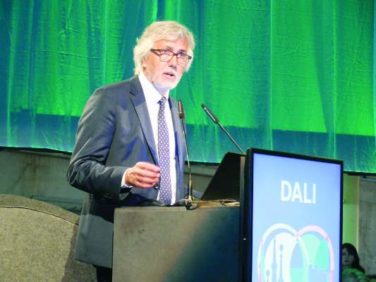AT IHC 2015
VALENCIA, SPAIN (FRONTLINE MEDICAL NEWS) – Following a schedule of regular daily mealtimes, bedtimes, and aerobic exercise is an effective yet underutilized tool for the management of migraine, Dr. Yohannes W. Woldeamanuel said at the International Headache Congress.
“We call these three ‘the RLB [regular lifestyle behavior] triumvirate’: daily regular sleep times, mealtime hours, and aerobic exercise. This is something physicians should be advocating … it provides the patient with a tool to help control his or her own migraine problems. Along with avoidance of daily headache medications, it has added value for clinical practice,” according to Dr. Woldeamanuel, an Ethiopian neurologist who is currently a fellow in the Stanford (Calif.) University Headache and Facial Pain Program.
He presented a retrospective study of 100 patients with chronic migraine aged 15 and older and 100 age- and gender-matched patients with episodic migraine treated at the headache center. Collectively, the chronic migraine patients averaged 2,497 migraine attacks per month, while the episodic migraine group averaged 578.
Although all migraine patients seen at the Stanford center are encouraged to pursue RLB, only 6% of the chronic migraine group did so regularly, compared with a 10-fold higher rate among those with episodic migraine. Slicing the data another way, only 9% of patients who were on the RLB bandwagon had chronic migraine, compared with 70% of those without regular lifestyle behavior.
An observational study such as this cannot establish causality. Yet Dr. Woldeamanuel saw evidence suggestive of cause and effect with regard to RLB.
“Interestingly, among the small cohort of chronic migraineurs who were following the RLB, they were progressively month after month converting into episodic migraineurs, while the episodic migraineurs who were not following the RLB were converting to chronic migraine, month after month,” the neurologist said in an interview at the meeting sponsored by the International Headache Society and the American Headache Society.
By definition, patients with chronic migraine take headache medications most days of the month, raising the possibility that medication use might be a study confounder. To check that out, Dr. Woldeamanuel stratified patients who adhered to the RLB triumvirate into those who regularly used rescue and/or preventive medications and those who didn’t. The two subgroups didn’t differ significantly in terms of the prevalence of chronic migraine.
“This supports the genuine impact of RLB as a migraine management modality. It’s therapeutic. That’s the message,” he declared.
What’s the mechanism of benefit?
“We have biological rhythms that maintain our health: ultradian, circadian, diurnal, infradian. RLB promotes release of endorphins and keeps levels stable, increasing the threshold for sensory change and peripheral pain,” he explained.
Dr. Woldeamanuel reported having no financial conflicts with regard to this study, conducted with institutional funds.




